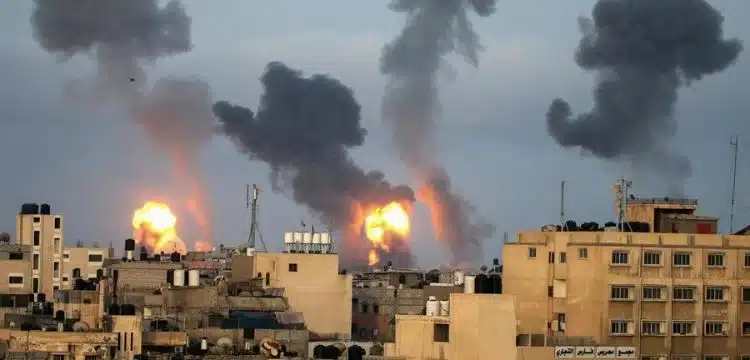[vc_row][vc_column][vc_column_text dp_text_size=”size-4″]On Monday, Israeli troops launched drone strikes in the West Bank city of Jenin for the second time in less than two weeks, sparking a gunbattle that lasted into the morning, killing at least three Palestinians.
The Jenin Brigades, a unit made up of various resistance groups located in the city’s massive refugee camp, reported it was engaged Israeli soldiers hours after the hit, with gunfire and explosives heard across the city and drones clearly audible overhead.
At least six drones were seen circling the city and the adjacent camp, a densely packed location that contains approximately 14,000 people in less than half a square kilometre.
The Israeli military had not utilised drone strikes in the West Bank since 2006, until last month, when it carried out a hit near Jenin on June 21. However, due to the increasing intensity of the violence and the pressure on ground forces, such methods may persist, according to a military spokeswoman.
Also Read: Israeli air strikes killed 12 Palestinians, health officials
“We’re really stretched,” he told reporters. “It’s due to the scale.” And, again, in our opinion, this will reduce friction,” he said, adding that the strikes were based on “precise intelligence.”
The apparent size of the raid, however, highlighted Jenin’s role in the conflict that has raged across the occupied West Bank for more than a year.
The refugee camp is home to hundreds of fighters from resistance groups such as Hamas, Islamic Jihad, and Fatah. They are accused by Israeli forces of having “an array of weapons smuggled into the West Bank or stolen from Israeli forces, as well as a growing arsenal of explosive devices.”[/vc_column_text][/vc_column][/vc_row]











